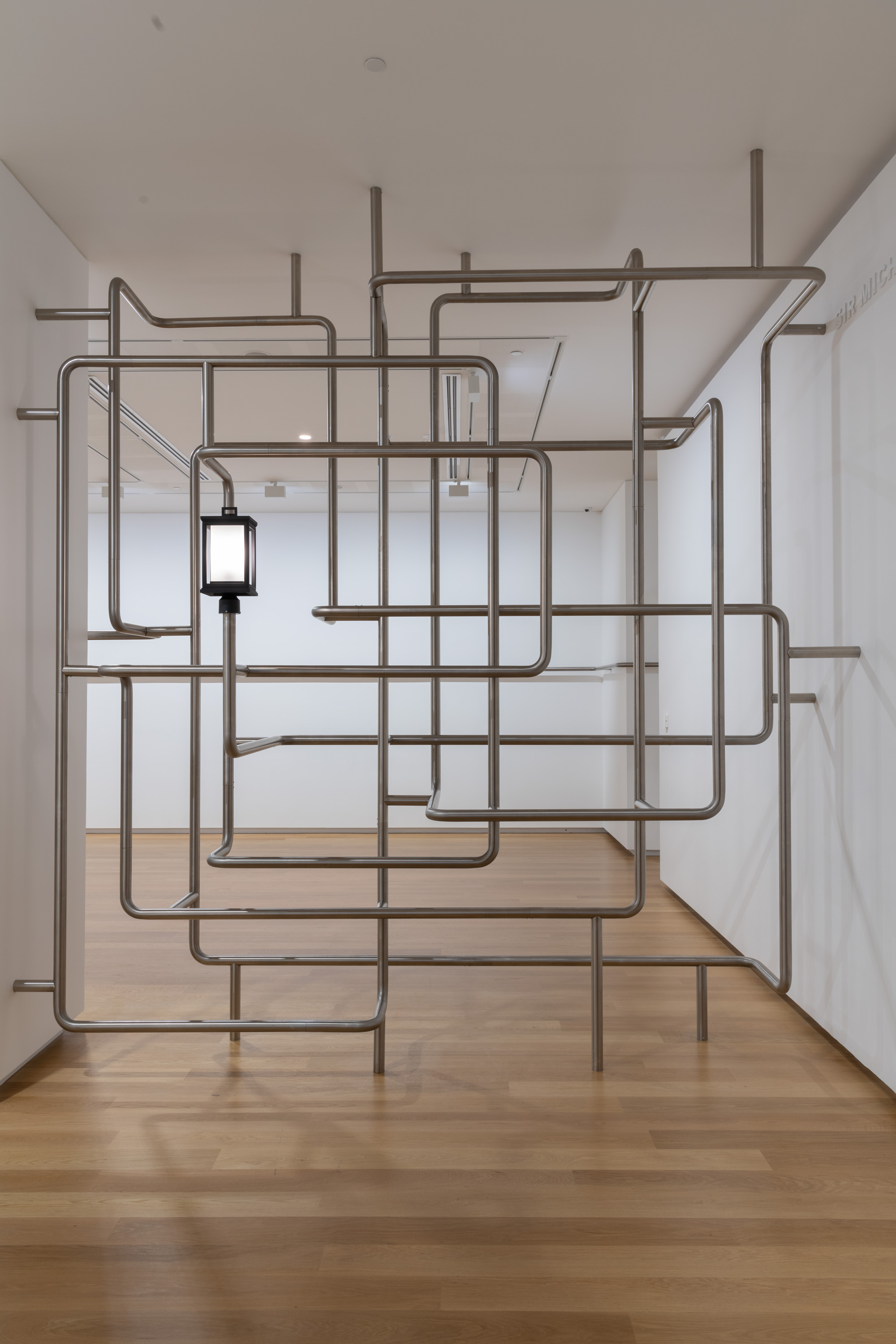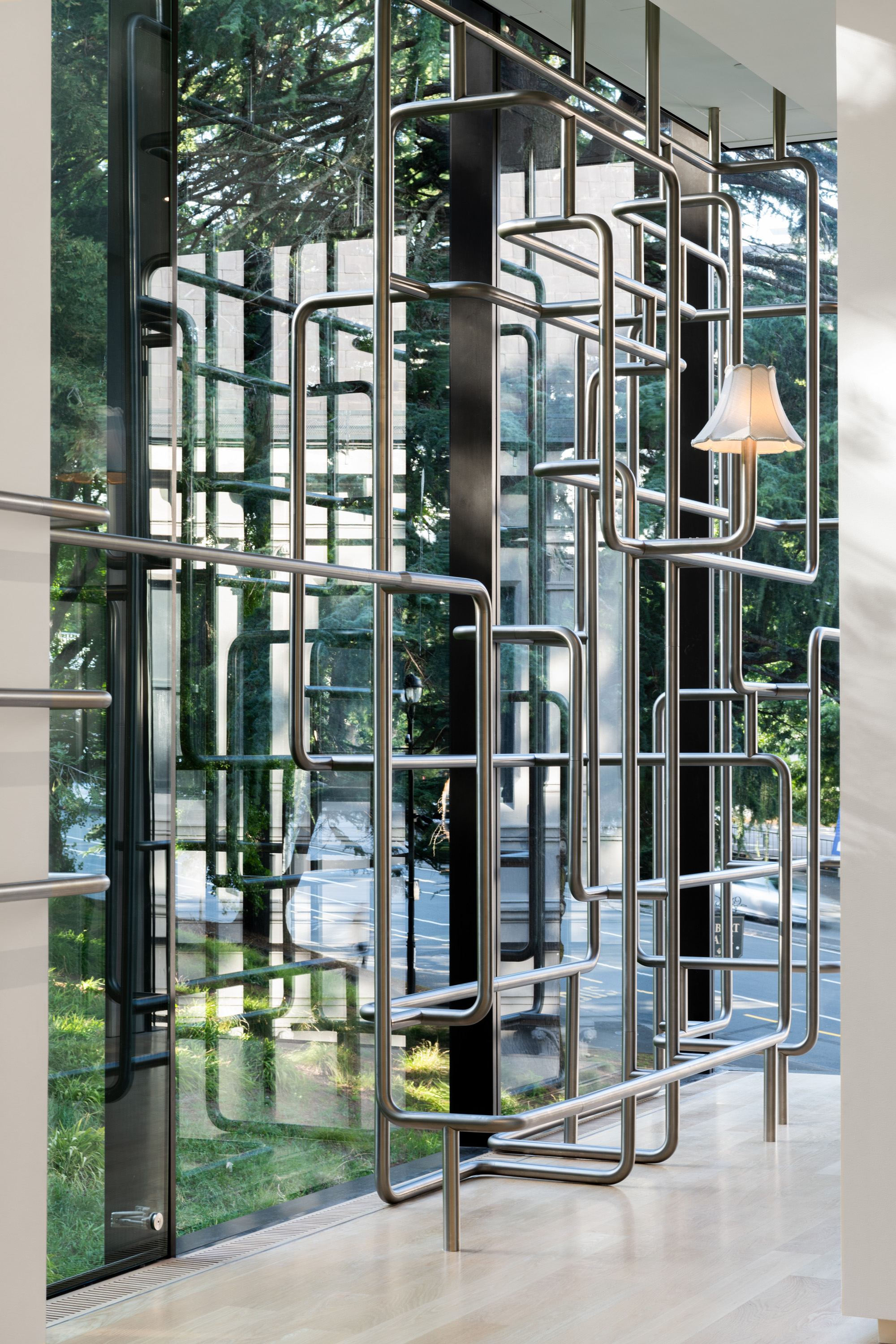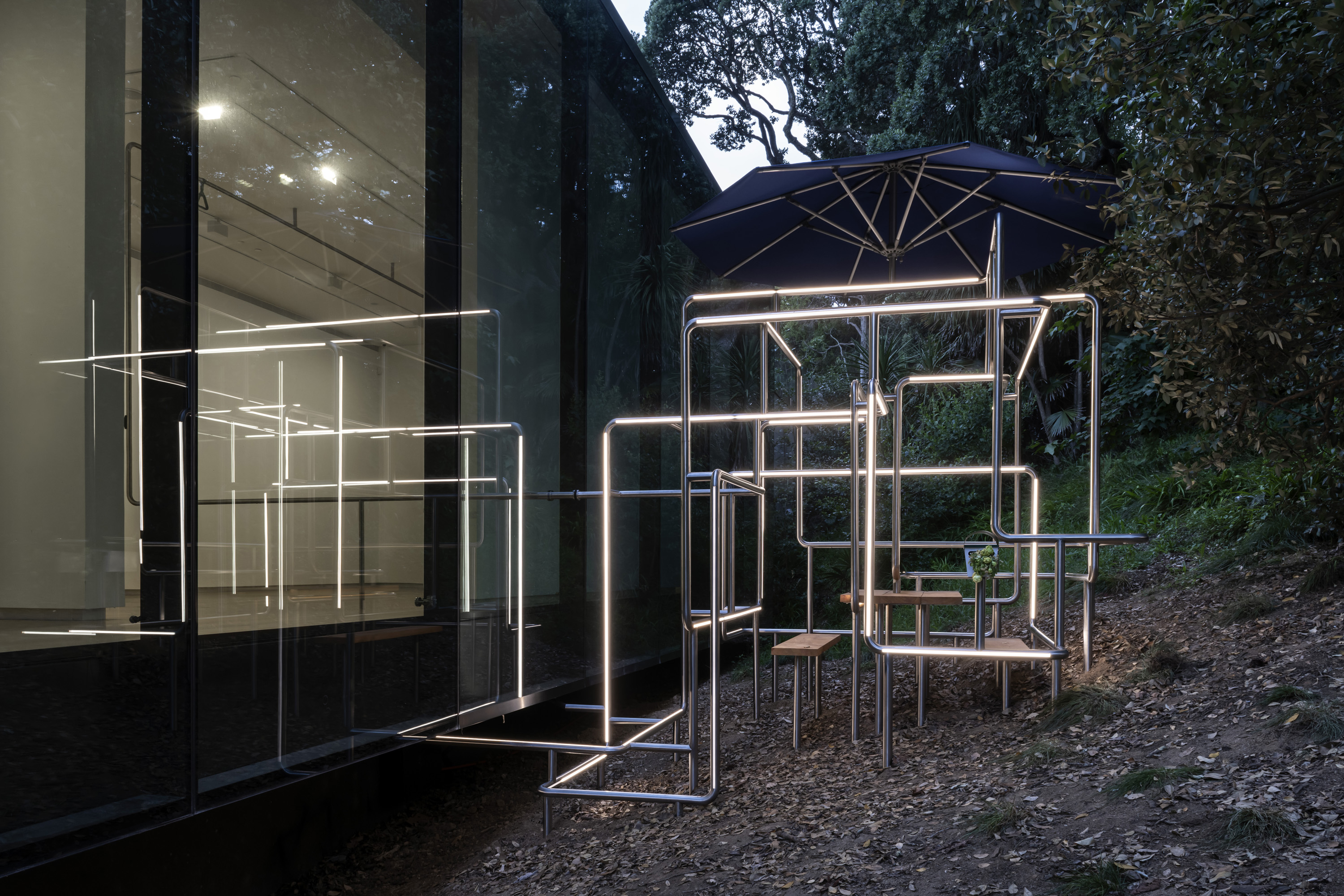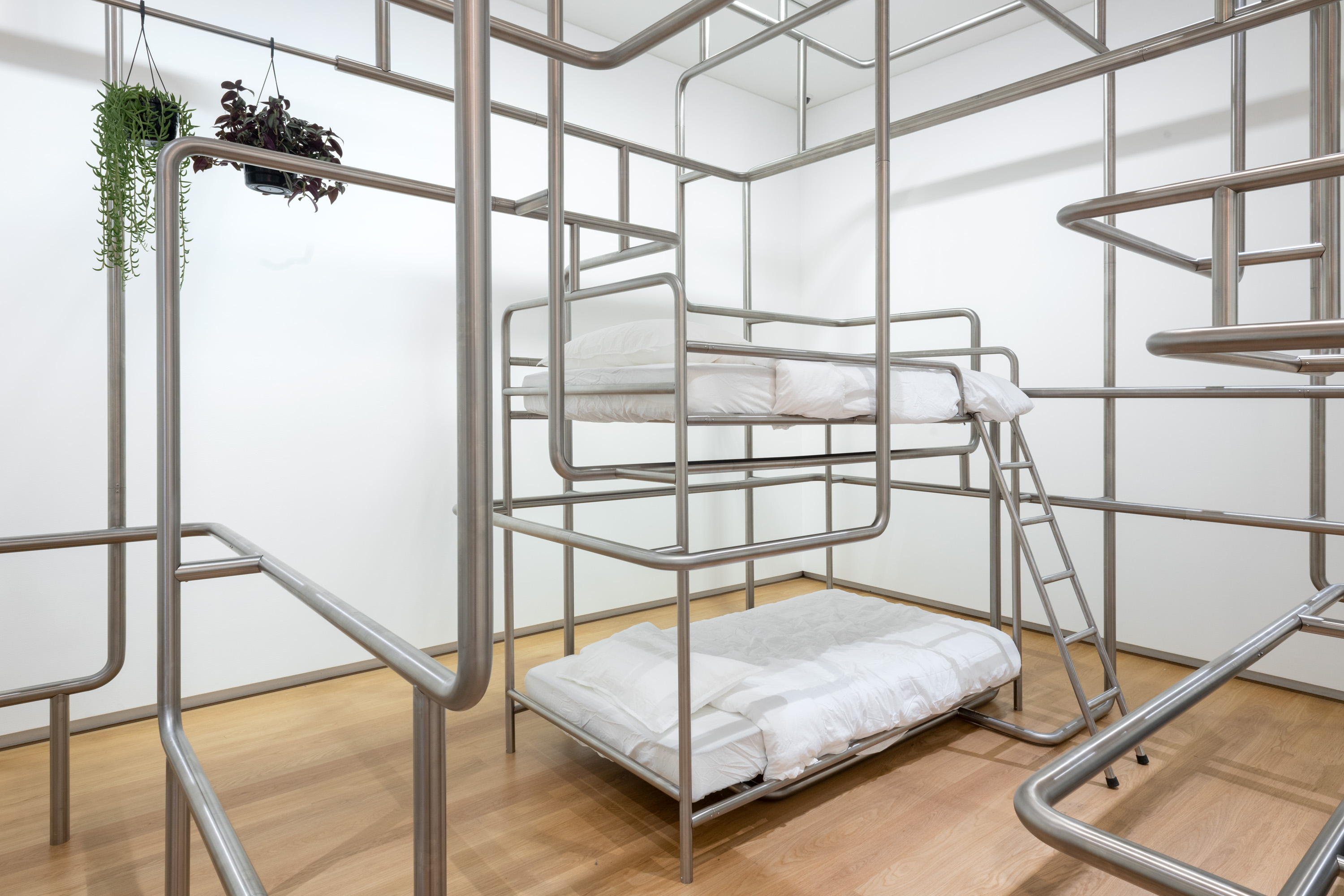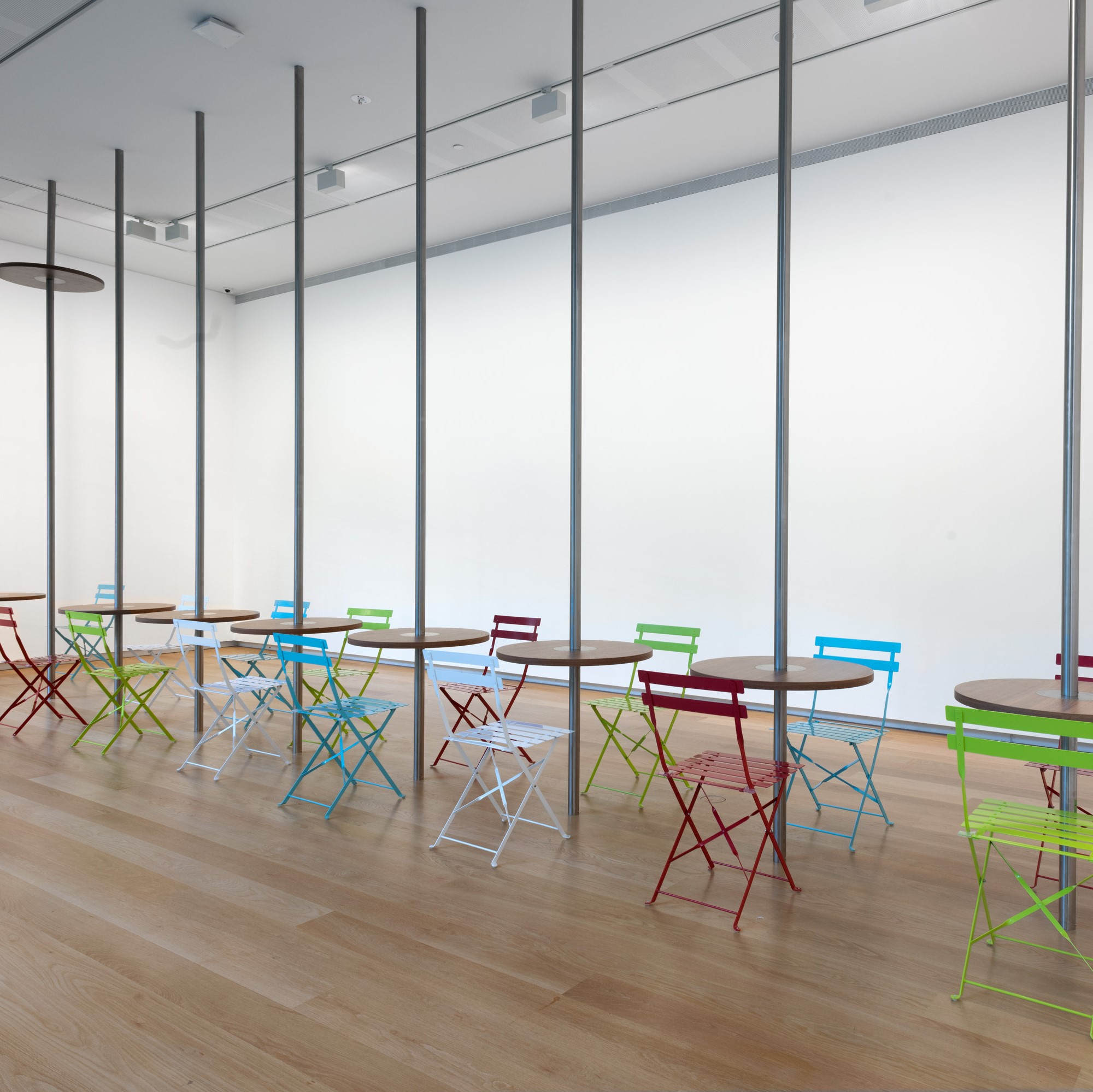Curator, Contemporary Art Natasha Conland and artist Yona Lee lead us through Lee’s sculptural practice and discuss her most ambitious project yet, An Arrangement for 5 Rooms. Republished from Art Toi Magazine, March 2022.
Natasha Conland: Your series of sculpture projects In Transit has been ongoing since 2016. It’s most recognisable for the striking use of bent stainless steel tube and attached sundry household furniture executed on an architectural scale. In this new work, An Arrangement for 5 Rooms, you draw upon a musical structure for the title. Is this a new direction for the work, or have the conditions of musicality been there through your period of making?
Yona Lee: The musical element has always been there on a subconscious level – I don’t necessarily think literally about music when I am making but I believe that my sense of how line sits within the space comes from my understanding of sound. I’ve borrowed a musical structure for a title before but my thoughts around it have become more organised recently. I’ve become more aware of how the steel structures function quite similarly to instruments – how they carry different intonations and depths of sound, with the four walls operating like the bars in a musical score with the spacing of each work setting up a tempo. The play with rhythm, variation and repetition has become more apparent in this work. The sense of progression and the linearity of gallery spaces has allowed me to extend this idea with scale. The space has two entry points, a large room, a small room and three repeated rooms that face Albert Park through a glass façade. I thought a lot about how the relationship between the work and the audience progress throughout each room and tried to work out the dynamic of each space to find the right gestures that maximise each room’s characteristics. In this process, I’ve reflected a lot on a simple song structure, like how there is an intro, verse, chorus, etc and the ternary form/sonata form in classical music where a theme is developed and repeated with variations.

